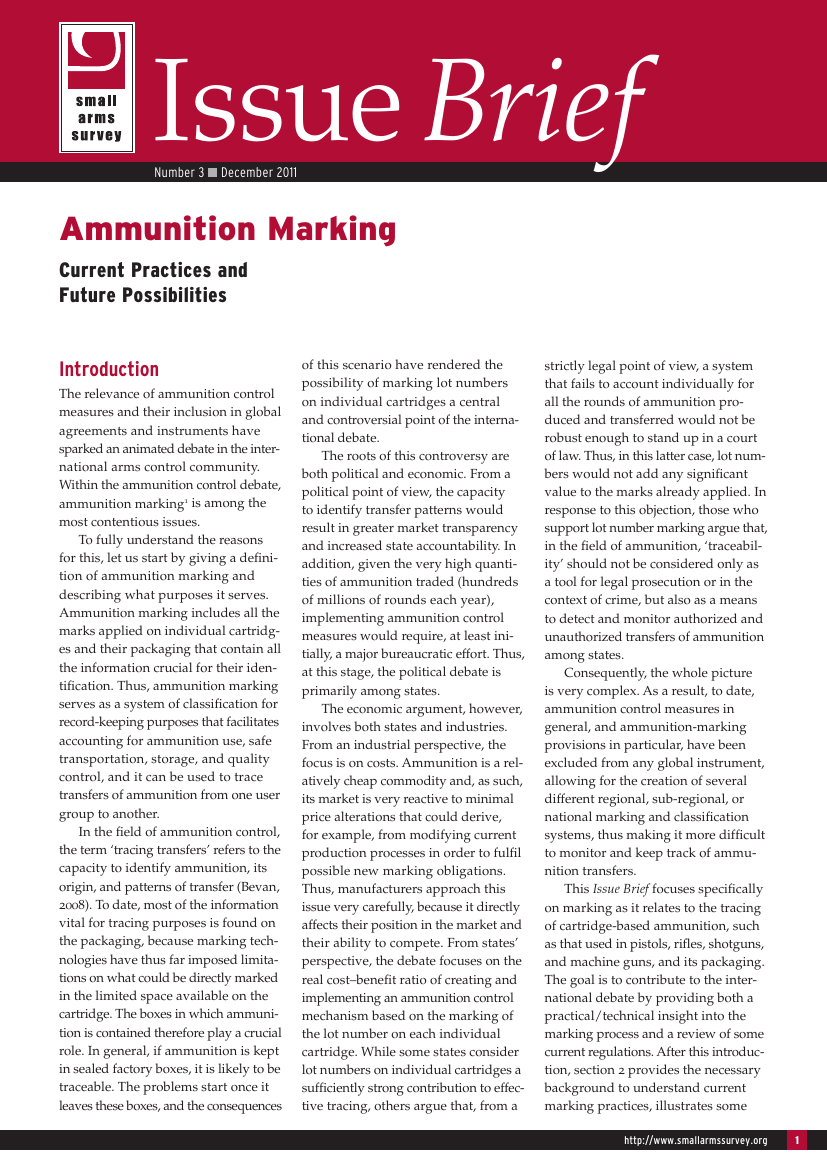
Ammunition Marking: Current Practices and Future Possibilities (Issue Brief 3)
Ammunition marking—including all the marks applied on individual cartridges and their packaging, containing information crucial for their identification—facilitates accounting for ammunition use, safe transportation, storage, and quality control. Within the international arms control community there is an ongoing debate about how useful marking is in helping to trace transfers of ammunition from one user group to another.
A new Small Arms Survey Issue Brief—Ammunition Marking: Current Practices and Future Possibilities—examines marking as it relates to the tracing of cartridge-based ammunition—such as that used in pistols, rifles, shotguns, and machine guns—and its packaging.
The notion of a universally applied mandate to mark individual cartridges, to allow their identification even when removed from sealed factory boxes, is controversial. Politically, an improved capacity to identify transfer patterns would result in greater market transparency and increased state accountability. Given that hundreds of millions of ammunition rounds are traded each year, implementing ammunition control measures would entail a major bureaucratic effort. The costs of implementing any new marking obligation would also have ramifications for industry, especially since the ammunition market, as a relatively cheap commodity, is very reactive to minimal price alterations.
As a result of this controversy, ammunition control measures in general, and ammunition-marking provisions in particular, have been excluded from any global instrument. In the absence of a global agreement, several different regional, sub-regional, and national marking and classification systems have been established, creating multiple standards and practices.
The Issue Brief provides practical and technical insight into the marking process and reviews some current regulations. It provides an overview of current marking practices, illustrates some key definitions, explores the global trends in ammunition marking, and describes current regional approaches.
An explanation of the practical aspects of ammunition marking offers insight into the production process and supply actors, exploring what information is marked and how, and analysing the specific issue of lot-number marking. Two emerging technologies—laser technology for marking individual rounds of ammunition at a later stage of the production process, and the use of radio frequency identification (RFID) technology to ‘mark’ and trace ammunition boxes of various sizes—could help overcome some of the limitations imposed by current practices.
Have your say about Small Arms Survey publications and products: take 5 minutes to fill out our questionnaire.